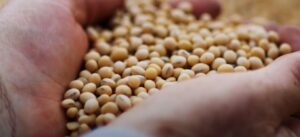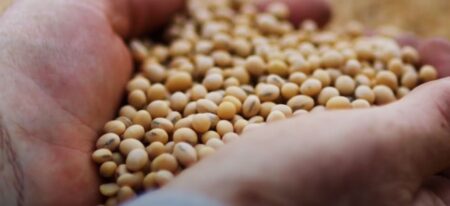Ohio is a tale of disparate weather this year by area. USDA published the latest Crop Progress report on Monday, July 14. Here’s a closer look at recent weather and the status of Ohio’s most important crops in mid-July.
Weather
In Seneca county, in north-central Ohio, Steve Berlekamp raises corn and soybeans with his daughter, and said he hasn’t seen a year this bad in his 71 years. He said they got 5 inches of rain in one week in mid June and it’s been a deluge ever since.
The cold, wet spring delayed his planting until right before the June 5 insurance deadline.
However, he said a friend of his in Greenville, in southeastern Ohio, told him his fields were so dry they might blow away.
Iowa Environmental Mesonet
In Monday’s Crop Progress report, USDA said farmers had 5.6 days suitable for fieldwork the week that ended July 13, compared to 4.9 days this time last year.
USDA rated Ohio topsoil moisture 4% very short, 17% short, 67% adequate, and 12% surplus. Subsoil moisture conditions in the state were rated 3% very short, 9% short, 76% adequate, and 12% surplus.
Corn
Acreage Estimates
According to the June 30 Acreage report, Ohio farmers planted 3.2 million acres of corn in 2025. This is down about 200,000 acres from the previous year, said USDA.
Pest and Disease Pressure
The Crop Protection Network shows there are no positive tar spot cases so far, though many counties have had the disease in previous years.
Crop Protection Network
Tasseling is a key time to consider management for vomitoxin, according to an Ohio State University Extension C.O.R.N. Newsletter article written by Ohio State Extension agronomists Jason Hartschuh, Stephanie Karhoff, Pierce Paul and Cristiano Nesi. Vomitoxin is the common term for deoxynivalenol (DON) mycotoxin.
“What was once considered an every-ten-year problem, has now become a yearly challenge in some sections of the state,” they said.
The authors suggested a model prediction could help determine if a fungicide will be beneficial.
“Your goal should be to apply fungicide when the majority of the field is silking but before the earliest silks turn brown. While not as effective as applying the fungicide during wet silk, the DON reduction is greater with a V18 application than a brown silk application,” they said.
Silking Progress
USDA reported that 21% of Ohio’s corn crop has reached the silk growth stage. That is slightly better than the five-year average of 18%. Last year at this time 31% of the state’s corn had reached the silk growth stage.
Corn Dough
None of Ohio has achieved dough stage yet, which is normal for the state this time of year. Last year only had 1% reaching the dough stage.
Corn Condition
USDA rated Ohio corn 1% very poor, 5% poor, 38% fair, 50% good, and 6% excellent for the week that ended July 13.
This is behind the national average rating, which is 1% very poor, 4% poor, 21% fair, 57% good, and 17% excellent.
Soybeans
Acreage Estimates
The Acreage report published June 30 said Kansas planted 4.9 million acres of soybeans this year. That is down 150,000 acres from 2024.
Pest and Disease Pressure
“Soybeans were plugging along with some drier fields. We sprayed one of the earliest fields, and when we got in there, I felt sick with how wet it was,” said Berlekamp.
Despite tiled fields, he said the lack of oxygen from water-saturated fields has been detrimental. He said he’s debating whether fungicide application will be enough to counteract the disease pressure.
Blooming Progress
The latest Crop Progress report said 34% of Ohio soybeans are blooming. That is marginally behind the five-year average of 38% and 38% this time last year.
Soybeans Setting Pods
Although 15% of the nation’s soybeans have reached the pod growth stage, Ohio is behind at 5%.
Soybean Condition
USDA rated Ohio soybeans 1% very poor, 5% poor, 41% fair, 48% good, and 5% excellent for the week that ended July 13.
The national average rating of 1% very poor, 4% poor, 25% fair, 58% good, and 12% excellent over the same time period.
Winter Wheat
Acreage Estimates
USDA’s acreage report said Ohio farmers planted 570,000 acres of wheat in 2025. That is up 500,000 acres from last year.
Winter Wheat Harvested
USDA noted 79% of winter wheat has been harvested in Ohio. This is behind the five-year average of 81%. Last year at this time 96% of Ohio winter wheat had been harvested.
Oats
Acreage Estimates
USDA’s acreage report said Ohio farmers planted 65,000 acres of wheat in 2025. That is up from 40,000 acres from last year.
Oats Headed
USDA noted 97% of winter wheat has headed in Ohio. This is ahead of the five-year average of 94%, and last year’s 88%.
Oats Harvested
USDA noted 11% of oats have been harvested in Ohio. This is behind the five-year average of 13%, but ahead of last year’s 1%.
Oat Condition
USDA rated Ohio oats 23% fair, 75% good, and 2% excellent for the week that ended July 13. There were none rated as very poor or poor.
The nine-state average ratings are 7% very poor, 9% poor, 25% fair, 51% good, and 8% excellent over the same time period.
Pasture and Range
USDA rated pasture and range conditions in the state 2% poor, 19% fair, 73% good, and 6% excellent. There were no very poor ratings.
The 48-state average ratings are 11% very poor, 17% poor, 26% fair, 33% good, and 13% excellent over the same time period.


:max_bytes(150000):strip_icc()/SoybeanRedCrownRotSPorter-a25a83ece6b54909b3e6ba0d997bd49c.jpg)




:max_bytes(150000):strip_icc()/Corn-Tassle-Close-Natalina-Sents-Bausch-c4fba9b4231f4b3da207a3f95a3e47e6.jpg)

:max_bytes(150000):strip_icc()/Cotton-Harvest-Matt-Miles-88f0df3cb0b84cc2aacfe15e4c15bda8.jpeg)
:max_bytes(150000):strip_icc()/IMG_7936-c12c642ad0064146a4aecfc1a60502a3.jpeg)
:max_bytes(150000):strip_icc()/HTTJohnDeeretractorwithtillage_preview-6e8cfa3643f043efb29085bd78d76c98.jpg)
:max_bytes(150000):strip_icc()/Canadian20flag48553671412_aeb0538794_c-0bfa123de2b54e30ab4fadecae382d4a.jpg)